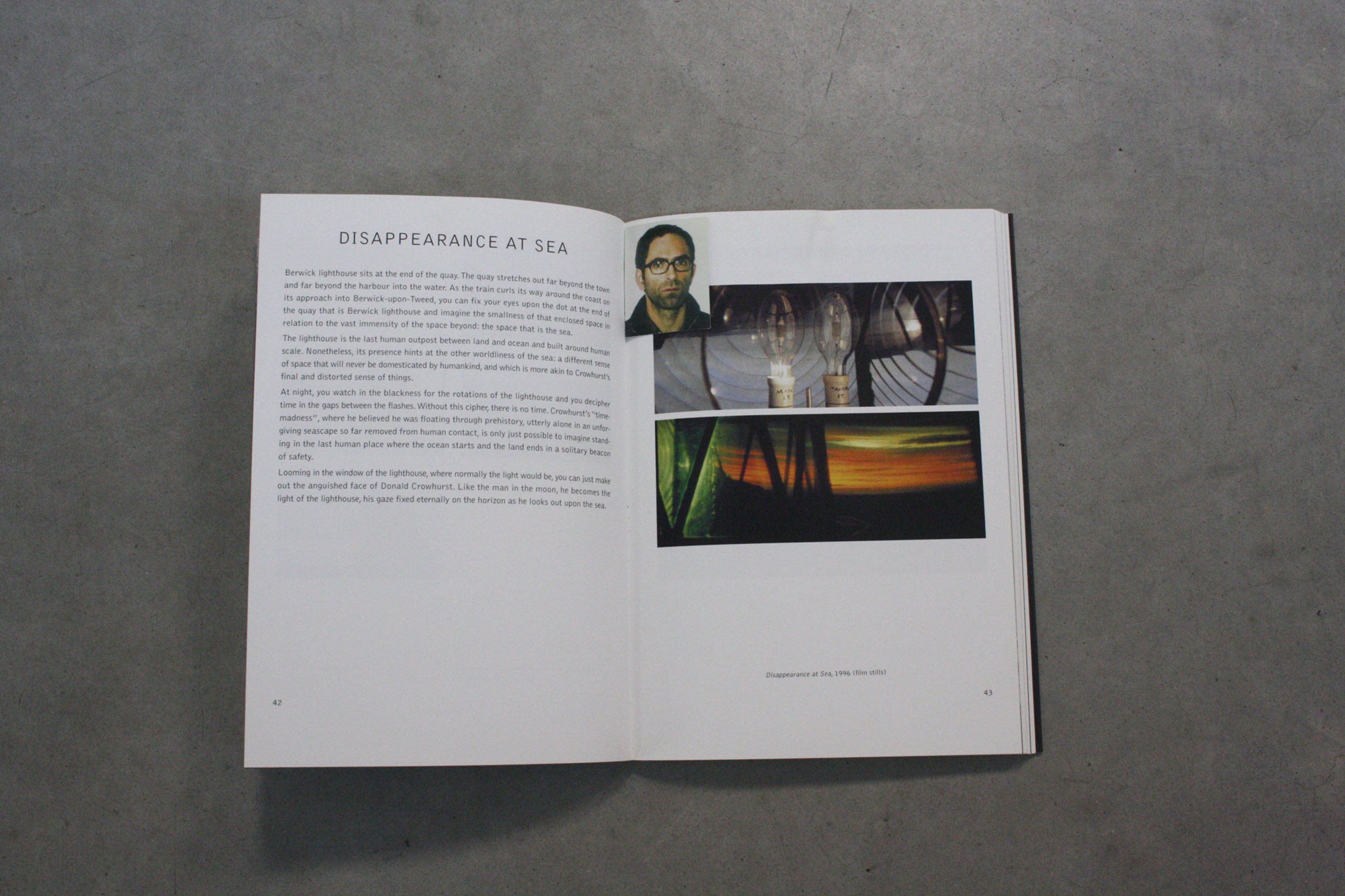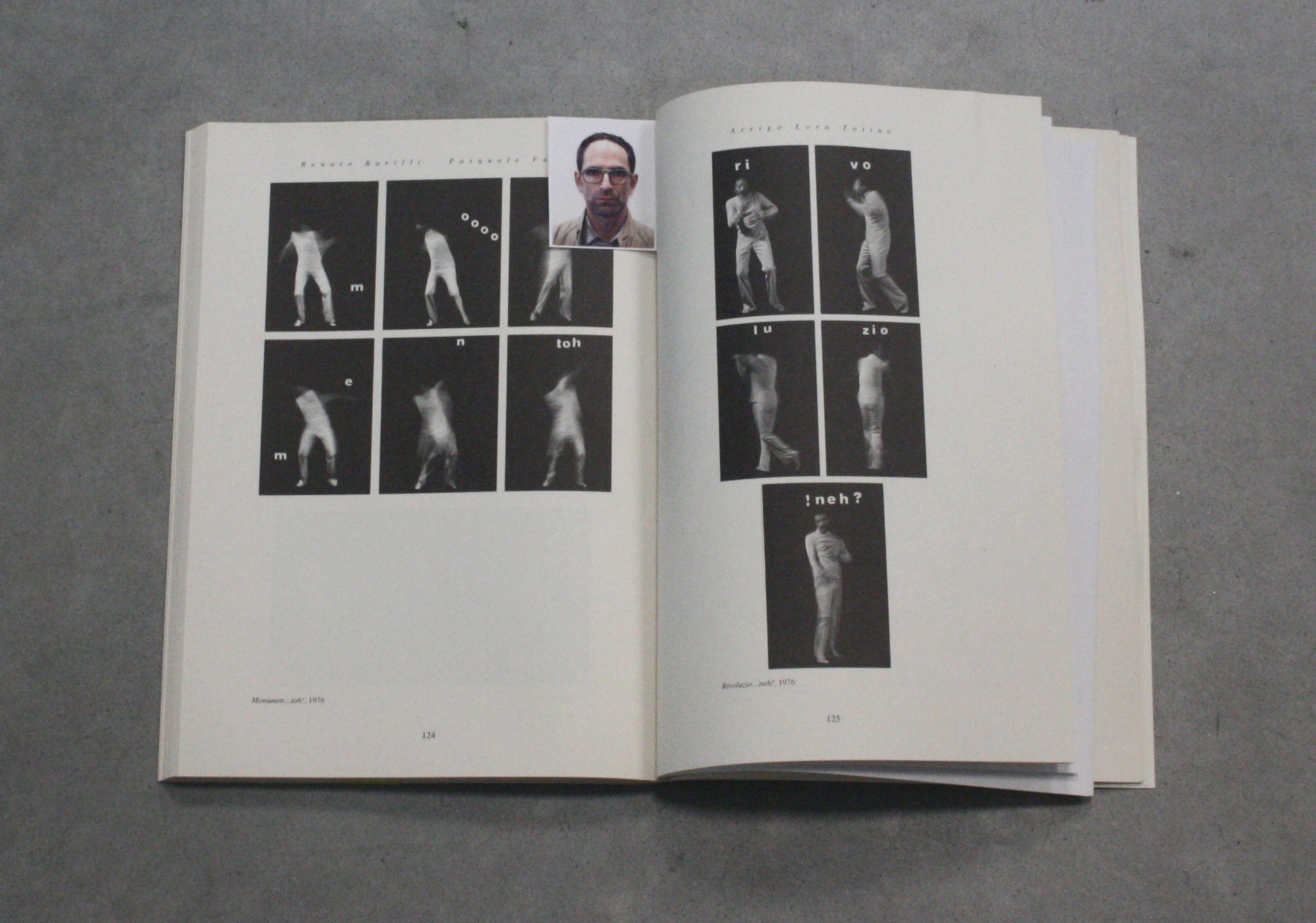
This conversation began in 2005 and was initially published in the magazine W Art: arte contemporanea. It was continued for and published in the following publications: Neue Review, Janus Magazine, Newspaper Jan Mot, FITAC (International Forum on Contemporary Art Theory), UOVO, arttuner.com, MOSTYN.org and updated in 2020 for Collecteurs for the exhibition 1-31.
Adam Carr: Perhaps we should use this interview as an opportunity to discuss your works which people do not get the opportunity to see and those which are only ever seen partially – pieces that are continually in process and works which completely bypass the stage of an exhibition or cannot be shown.
Jonathan Monk: Like secret projects that are in process and are rarely seen, some only by the people that own them etc., and some not by anyone.
AC: Let’s start by discussing a recent work I have not seen, entitled Jonathan Monk presents a book by Donald Burgy from 1973 that you presented at Jan Mot’s gallery in Brussels. Is this as straightforward as the title suggests?
JM: The presentation of the Burgy book at Mr. Mot’s is exactly what it says it is…I made the piece for last year’s Baltic Triennial in Vilnius, not that I really made anything: each day of the exhibition a new page of the book is presented, a page is turned in the morning and visitors must come back to see the entire book unless, of course, they already have the book at home.
AC: You mentioned pieces only seen by their owners; could you elaborate on this idea? I know of one piece for instance in which you established correspondence with a Canadian collector in an attempt to guess his grandmother’s name. What are the rules and parameters of this piece and where does the idea stem from?
JM: The name guessing is quite a simple piece: each week I send the collector a new guess until I guess correctly and then the piece is complete. I guessed the Canadian collector’s mothers name, but it took three years. Her name was Berta. I am still searching for an American’s grandmother’s name and an Italian mother. The whole idea is almost futile as there are millions of names in the world and only so many weeks in my life. Actually, guessing correctly is solely down to luck, it’s always random and without research. The work can only exist if someone decides they want it to exist. It could last a lifetime or a week, either way the work is the same.
Another work, Lost In Your Head, is a ten year project that involves me sending passport sized photographic self portraits to two Italian collectors and they then hide the pictures within the pages of books in their library.

Jonathan Monk – Lost in Your Head, 2005-2015

AC: Are there any other in pieces in existence that also share this condition of using a collector’s participation as part of the work itself?
JM: Time Piece (2002-), which is a postal work that involves the sending and receiving of cards in which the time is depicted, such as church clocks, town halls, railway stations, etc. The collectors then order the cards according to time. There is also a work called Untitled (to be completed when the time comes) (2005-), which includes a craved text in marble and involves a collector finishing the work after my death. And a work where I send sms messages describing the weather where I am when I send the message.
Recently, I made a piece for a group of twenty three collectors in Aachen: a giant jigsaw puzzle made of 24 steel pieces each person gets one piece, so only when they all come together is the piece complete…and I keep the final piece
AC: The post card pieces are very pertinent in regard to the seen and not so seen that you described in relation to your work. When shown, they only illustrate a particular phase of development since they have an on-going life beyond the occasion of an exhibition – Mantelpiece Piece (1997-) is a good example. Could you briefly describe what this piece entails?
JM: Postcards sent by me to the Lisson Gallery, in London, that I believe might have influenced the idea of sending postcards to a gallery and subsequently displaying them on a shelf at mantelpiece height. The shelf without cards resembles a minimal sculpture, a John MacCracken-style plank perhaps. The piece has been shown three or four times… once at the Basel Art Fair… many cards were stolen…but the work remains constantly in process, only ever completed when no cards can either be sent or received.
AC: I am interested in knowing about the other postcard pieces in perpetual progress, could you tell me a little about them?
JM: The only others are The Thelonious Monk Orchestra Piece (1998-) and Silence Is Golden. In the first, I send holiday postcards to a Brazilian collector, now a very large collection of the blues. It is nice to make work on holiday without it being work…In the second, cards are sent to Galleria Sonia Rosso, in Turin.
AC: Such as what?
JM: Any post card where some kind of sound is pictured, we imagine the sound without hearing the sound. Did I mention Day & Night & (2002-)? I send cards to the Guggenheim Museum in New York of exactly the same place pictured in the day and in the night. One kind of flows naturally into the other… day turning into night and back into day…
AC: There is a great tradition of artists who use the postal service as a system for the production of work, such as Douglas Heubler or On Kawara to name a few examples. Your focus seems to be directed not only toward the action of sending but also to the idea that, through the course of the journey, the pieces might never arrive to the chosen recipient. The postcard series sent without postage drives this idea to its limits. What was the initial impetus behind your postcard pieces and, moreover, this idea of uncertainty?
JM: All of the post card pieces are straight forward, they involve the sending and receiving of postcards, they are always in process, their end is also mine or the recipient’s. A lot use the system that is present and or presents itself. Either through the post office (stolen postcards sent without postage) or the card produces themselves. One series titled The Sun Never Sets involves the sending and receiving of black postcards – such and such a place by night.
AC: We have discussed the pieces that are initiated for the eyes of collectors as well as the works that are only seen partially such as the aforementioned postcard series. Are there any works in existence that you yourself have never seen?
JM: I made a show in Zurich in 2003 called The Unseen Unseen II, a show that I was not allowed to see. In fact, I am never allowed to see the piece I proposed to the gallery. They show a 16 mm film loop and ten photographs but the content of the film and photos was entirely up to them… There may be some documentation, but I have never seen it.
AC: What happened in the first version of this piece?
JM: The first version of Unseen Unseen is purely photographic, 80 black and white photographic prints from Berlin: my assistant found them in a flea market.
I have never seen them and never will.
AC: I wanted to ask you about the meeting pieces, a series of works that connect with this notion of what one sees and doesn’t see. I am particularly interested in how these works operate in two stages: the showing of the work proposing a meeting in the distant or near future which, when purchased, becomes an appointment with its buyer. Therefore, the work is made public to offer a private experience to an individual or a selective few. The actual meeting–where both the buyer of the work and yourself are required to be present at the proposed time and destination, be it Mexico, France or the UK– is based on a level of trust and seems to turn around questions of uncertainty in a way not too dissimilar to the postcard pieces. I know that some of these meetings have started to take place, could you discuss a little about them? How many have already taken place and have you been finding the collector at the proposed destination?
JM: The idea came to me when I lived in LA. I wanted to make a text work that was simply an instruction for something else to happen. I guess similar to Lawrence Weiner’s sculptural texts. LA felt very disjointed and far away from where I come from, and not just physically. One needed to plan well in advance, nothing happened spontaneously. Perhaps this led to the forward planning with the meeting works. I am also interested in how the works function on three levels: the invitational text, the actual meeting and the memory of the rendezvous. Only one meeting has taken place – it was very straightforward, exactly how one could imagine a collector meeting an artist as a work of art. I also have meetings scheduled for San Francesco, Turin, two in New York and one in Hong Kong.

AC: Are there any pieces that go completely undetected to the visible eye, that are devoid of any visible trace and which ultimately remain secret?
JM: There are projects that have been made and are available to be seen but are impossible to see. The laser that writes To Infinity And Beyond in the sky – I know it writes the text, but there appears to be nothing to read or even see.
AC: What about the piece in your exhibition at the ICA, London that took place around the time of the Frieze Art Fair a few years ago? One could see this piece but couldn’t hear it.
JM: Yes, the Sound Piece or Silent DJ. It was also performed at the Museum Kunst Palast for the exhibition “Spectacular:” A DJ is hired to play a regular set, but only s/he gets to hear the music that is played, through headphones; the audience just watches the movements of the performer.
AC: On the subject of art fairs, I recall hearing about a work that was shown at Nicolai Wallner’s stand at Art Basel 2005 or perhaps 2006, which to my knowledge, has only been shown publicly on that occasion. I believe it consisted of a remake and a readjustment of an early piece of yours, also of which has only been shown once.
JM: Yes, that piece included a work from my first show at Nicolai Wallner in 1995 – a dark coloured canvas with a ring left by a pint glass on the monochrome surface. Nicolai recently acquired the piece back from a collector who was selling his collection and we then found that the piece needed restoring. So, we had it cleaned by a professional and then displayed the work with the documentation of its restoration. The beer stain remains.
AC: I’m interested in discovering what is missing or unseen in the piece Missing Letters.
JM: The Missing Letters is a remake of a piece I made a couple of years ago called the Missing Letter, which was in many ways a remake of a Boetti’s postal work from the early 1970’s. I followed Alighiero’s example of moving the stamps around on an envelope…three stamps and all their possible combinations and sent six letters to his last known address in Rome, five of which were returned, so one I assumed arrived. The remake was done for a show in New York and the letters were sent from New York to Rome and only one returned…five found their target or not…we can only make assumptions…they are missing and may still return. The system is now making the piece. The very first version of this piece was also stolen or misplaced between Germany and England; now the entire work is missing.
AC: Lastly, playing around with the genre of interviews: perhaps you could propose a secret question to an artist of your choice and we could include their answer, whoever that maybe?
JM: I would like to ask Mark Rothko: What made you do it?
Also, I forgot to tell you that another of the name-guessing pieces we spoke about earlier is now complete: I guessed the grandmother’s name after almost 2 years of weekly guesses. Her name was Edith.
AC: It’s 2014 now. We’re picking up this conversation again. I think the last time we spoke about this theme in your work for interview was around 2011. What has happened since then in terms of the seen and the unseen, works for collectors eyes only or works that are made, shown and disappear, etc.?
JM: I’m still guessing a mother’s name and a number of the meeting pieces have been met, but otherwise things have been quiet on the seen and unseen front. Although… I am working on a few secret collaborations and new ways of hidden presentation. But the less said about these the better…
AC: You’ve developed your own www. project that takes place in-between the border of one show and another…
JM: I made a number of in-between shows at Yvon Lambert in Paris. The website project was just a form of documentation. The website was the best way to show the complete and slowly growing project. The shows in Paris really allowed me to make very quick and simple interventions and performances. I employed someone to read a book for me and for two people to think. The rest of the project was a mixture of new and old works presented in different ways. The re-presentation of old works is something that I am doing at the moment. Often I show works at a fair and things come and go quite quickly. The format of the fair is really quite depressing – often only allowing for a quick response and a sale. It is a trap too easy to fall into. I am hoping that artists will one day turn their backs on this kind of system… maybe just once — it would be interesting to see what happens to the art world. I am never sure why artists continue to flock to Basel… I guess you can meet your friends there…

Photography: Philipp Langenheim for Collecteurs

AC: A year has passed. It’s now 2015. Your postcard edition for the exhibition ‘We’ve Got Mail’ that I have curated is titled Picture Postcard Posted from Postbox Pictured, and is part of a series which, to date, includes those made for venues in New York, London, Brussels and Paris, among others. Each version of the edition depicts an image of the closest postbox to the gallery, institution or bookshop that it is produced for. After a postcard is purchased, you will write the address and message that the purchaser would like, together with your signature. The postcard will then be posted from the postbox pictured on the postcard, which in MOSTYN’s case is directly next door to the building. It was made initially for the exhibition We’ve Got Mail which I invited you to take part in, a sequence of shows relating to the former use of the gallery where they take place – a postal sorting office. Who was the first postcard for in this series?
JM: The first card was Berlin and published by Revolver. The actual box is just round the corner from my house and the latest in the series is Llandudno. I will probably make one for Tokyo and Rome next year…
AC: What was the initial inspiration behind the series?
JM: I’d been thinking about postcard pieces and how I could make something really specific to a particular post box. The post box, for me, was a really important receptacle for communication. Sadly, it’s becoming a dysfunctional part of our lives – I’ve lost faith in the postal system… but anyway, the title was the thing that got me excited by the idea – simply descriptive but funny and poetic. Once I set the idea in motion it was quite easy to add cities to the list – all I need is a willing participant to post off the cards. These people generally become the publishers.
AC: Jonathan, it’s 2019. For the exhibition 1-31 for Collecteurs, we are presenting some evidence of your piece Lost in Your Head, which we discussed earlier in this conversation. How many passport photographs did you send to the owners of the work in the end?
JM: I have no idea… I never actually counted. It didn’t seem important.
I just kept the project slowly moving forwards. I sent a lot of envelopes and I can only assume the majority were received. I did have a lot of small passport photographs left over–generally three left from the 4 initially purchased. The leftovers became a work in themselves – The Remains From Lost In Your Head (2017)
AC: Are you still making some of the works we discussed earlier? Have all of the name guessing pieces come to an end? What about the piece in which you send sms text messages to a collector describing the weather?
JM: I’m still guessing a mother’s name – I think this is an impossible task – hundreds of guesses come and go and of course I have no idea if I’m even close, as close is also not close enough.
The weather SMS project never really moved beyond the idea… I acquired a simple mobile phone and sent messages to (gallerist) Sonia Rosso – I guess it could be started again… cold grey skies and drizzle.
End.